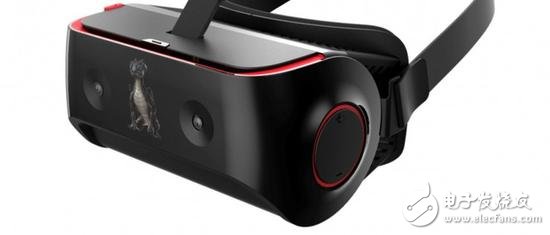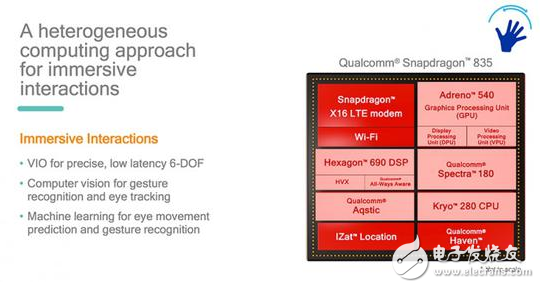MWC 2017 will open on February 27th. According to foreign media UploadVR report, Qualcomm will launch a new Snapdragon 835 VR all-in-one solution at MWC. The solution will feature 2560&TImes; 1440 AMOLED screen, 6DoF tracking, eye tracking, gaze rendering, and other performance enhancements and power savings.
The most significant change is that the new solution will integrate Leap MoTIon hand tracking interactions, thus solving the problem of long-term lack of good interactive solutions for mobile VR.

éªé¾™820 One machine reference design
The Snapdragon 835 VR Developer Suite is expected to be launched on the Qualcomm Developer website in Q2 this year. The main purpose is to help developers optimize the app for the 835 display, and the first use of the program is expected to be launched in the second half of this year.
In addition to the new development kit and Leap MoTIon, Qualcomm also announced a head-up (HMD) acceleration project. The goal is to help head-end manufacturers reduce development costs and speed time to market, and some vendors are now having problems in this area. The project will also help OEMs and ODMs modify the 835 VR all-in-one solution with pre-optimized eye tracking (from SMI) and Leap MoTIon gesture tracking technology.
At present, Lei Feng.com has received the MWC invitation from Zhongke Chuangda and Goer Acoustics. It is expected that they will release the VR all-in-one solution based on the Snapdragon 835 during the conference. Both companies have previously launched a solution based on the Snapdragon 820, and the 835-based version will be an upgraded version of the former.
What improvements did the Snapdragon 835 have for VR/AR?According to previous reports by Lei Feng.com, the Snapdragon 835 released at this year's CES is optimized for Google's Daydream in addition to its own VR all-in-one solution.
Due to VR's requirements for 3D graphics, 3D audio, spatial positioning, and gesture recognition, there is a high demand for SoC performance and collaboration between processing elements.
An important parameter affecting the VR experience is latency (from motion to screen display time). In this regard, Qualcomm indicates that the delay of 835 is 15ms, compared to 820 for 18ms.

In addition, Qualcomm has introduced a system called Visual Inertial Odometry (VIO, Visual Inertial Measurement) to track head 6-DOF (6 degrees of freedom) motion. The system uses the Hexagon 682 DSP to process the camera's approximately 30 fps video stream while capturing the accelerometer and gyroscope data at 800 Hz or 1000 Hz using an All-Ways Aware DSP. Combine these data to get 6 degrees of freedom position information.
Qualcomm said that using DSP to achieve this function is almost four times more efficient than CPU processing.
Qualcomm believes that computer vision is an important part of VR and AR. It uses SMI eye tracking technology to add a foveated rendering function to VR, which makes the center of the user's field of vision focus more clearly, and also adds new interactions. The way.
In addition, each person has a different interpupillary distance (IPD), and the head is also moved when worn on the head, and can be dynamically and accurately adjusted for IPD through computer vision.
yucheng county huibang electric technology ltd , https://www.hbspeaker.com